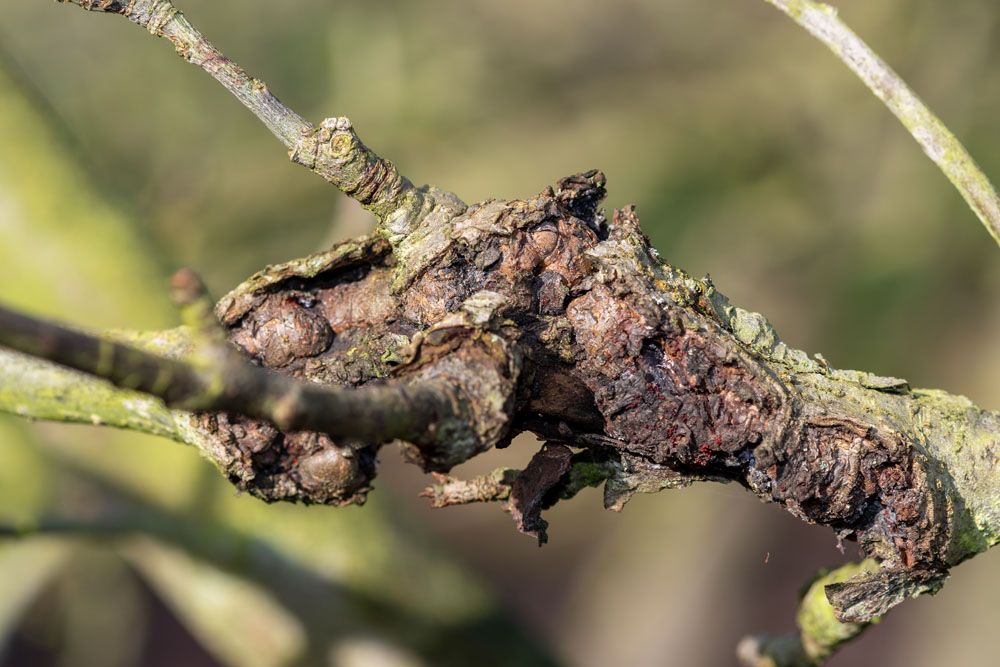
Cankers
Cankers
Canker infections usually damage branches or impair a plant’s structural integrity until the affected section comes away, which commonly happens during a wind or ice storm. The environment determines the severity of the canker, the age of the plants, and whether or not the plants are stressed in any other way — all of these variables can limit plant defense responses. We’ll look at the most prevalent canker illnesses and how to deal with them.
What is meant by canker diseases?
Canker diseases affect a wide range of trees and plants, and they are prevalent, pervasive, and devastating. A ‘canker’ is a sign of an injury, most commonly linked with an open wound infected with a fungal or bacterial disease. Canker infections usually damage branches or impair a plant’s structural integrity until the affected section comes away, which commonly happens during a wind or ice storm. Cytospora canker, which affects spruce, pine, poplars, and willows; Phomopsis canker, which affects juniper, Russian olive, Douglas-fir, and arborvitae; and Nectria canker, which affects honey locust, oak, and maple trees.
Symptoms:
All aboveground sections of the citrus tree are vulnerable to bacteria, which thrives and multiplies in damaged plant components. Premature leaf and fruit drop, twig dieback, overall deterioration, and inadequate fruit are all symptoms of citrus canker. Blister-like lesions on leaves and fruit seem minor and then become more significant as the illness advances. These lesions may become brown or black, with a water-soaked edge and a yellow halo encircling them. On leaves, stems, and twigs, the core of the lesion might seem elevated and corky or surrounded by a water-soaked perimeter. On older symptomatic leaves, mature lesions may have a shot-hole, and these lesions may eventually die and fall out.
What are the causes of cankers?
The majority of cankers are produced by the fungus, although a few that harm fruit and nut trees are caused by bacteria, including Erwinia, Pseudomonas, and Xanthomonas species, viruses, and other diseases. Numerous species of these fungi have not had their host-pathogen interactions or pathogenicity adequately examined. Many of the fungi have been identified as minor or secondary diseases. Some plants have both perfect (sexual or teleomorph) and imperfect (asexual or anamorph) states, which can exist on the same plant at the same time. As a result, there is very certainly some overlap in the list of host plants for many of the species. Many of the genera might benefit from the addition of minor host plants, mainly shrubs.
How to control:
It’s challenging to keep cankers under control. There are no chemicals that are widely approved for the treatment of cankers. The best rules are preventative measures to keep plants healthy or, where possible, pruning off damaged plant sections.
- Select resistant kinds of trees and shrubs that is suitable to the location and site.
- Planting, mulching, watering, soil management, trimming, and winter protection help keep plants healthy and robust.
- Avoid any unwanted bark wounds since injuries are a common way for pathogens to enter the body.
- If you have a canker infection on twigs or branches, carefully remove the infected areas several inches behind the condition. Pruning cuts should be performed at the branch collar, with no stubs left behind.
- To prevent the fungus from spreading, avoid pruning when the bark is damp. Between cuts, sanitize pruning tools with rubbing alcohol or 10 percent household bleach.
- When a trunk canker appears, the tree may seal it off by developing a callus around it. Cutting into such abscesses can reignite fungal activity and worsen the damage. It’s better to leave any form of trunk canker removal to a licensed arborist.
